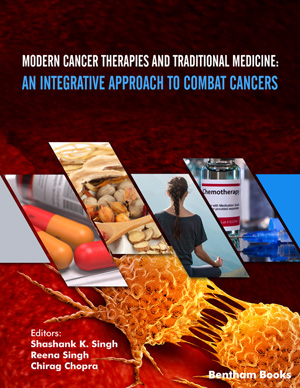Abstract
Objectives: This paper aims to review studies regarding side effects found during Non- Hodgkin Lymphoma treatment, to suggest the drug class most associated with these effects, as well as the most prevalent side effect grade.
Methods: This review is registered in PROSPERO (IDCRD42022295774) and followed the PICOS strategy and PRISMA guidelines. The search was carried out in the databases PubMed/ MEDLINE, Scientific Electronic Library Online, and DOAJ. Medical Subject Headings Terms were used and quantitative studies with conclusive results regarding side effects during the non-Hodgkin lymphoma treatment were selected. Patent information was obtained from google patents.
Results: Monoclonal antibodies were the main drug class associated with side effects during NHL therapy. The combination of Rituximab (Rituxan®; patent EP1616572B) and iInotuzumab (Besponsa ®; patent EP1504035B3) was associated with a higher incidence of thrombocytopenia (p < 0.05), while the combination of Rituximab and Venetoclax (Venclexta®; patent CN107089981A) was associated with a higher incidence of neutropenia (p < 0.05) when compared to Bendamustine combinations (Treanda™; patent US20130253025A1). Meta-analysis revealed a high prevalence of grade 3-4 neutropenia and thrombocytopenia in men. Finally, Americans and Canadians experienced a higher prevalence of these side effects, when compared to others nationalities (p < 0.05).
Conclusion: Patents regarding the use of monoclonal antibodies in NHL treatment were published in the last year. Monoclonal antibodies associated with neutropenia (grade 3-4) and thrombocytopenia, especially in North American men treated for NHL, and with an average age of 62 years demonstrated importance in this study.
[http://dx.doi.org/10.3324/haematol.11011] [PMID: 17606447]
[http://dx.doi.org/10.1002/(SICI)1096-9896(199907)188:3<231:AID-PATH325>3.0.CO;2-A] [PMID: 10419588]
[http://dx.doi.org/10.1016/S1470-2045(05)70434-4] [PMID: 16389181]
[http://dx.doi.org/10.1016/S0140-6736(12)60605-9] [PMID: 22835603]
[PMID: 17617251]
[http://dx.doi.org/10.1158/1055-9965.EPI-13-0040] [PMID: 23595542]
[PMID: 7947004]
[http://dx.doi.org/10.1007/978-3-319-13150-4_1]
[http://dx.doi.org/10.1093/acprof:oso/9780195149616.003.0046]
[http://dx.doi.org/10.1182/blood-2016-01-643569] [PMID: 26980727]
[http://dx.doi.org/10.4065/80.8.1087] [PMID: 16092591]
[http://dx.doi.org/10.1056/NEJM199807023390104] [PMID: 9647875]
[http://dx.doi.org/10.1016/S1470-2045(08)70078-0] [PMID: 18400558]
[http://dx.doi.org/10.1182/blood.V124.21.393.393]
[http://dx.doi.org/10.1200/JCO.2005.09.131] [PMID: 15867204]
[http://dx.doi.org/10.1016/S0140-6736(13)60313-X] [PMID: 23615461]
[http://dx.doi.org/10.1200/JCO.2005.05.1003] [PMID: 16754935]
[http://dx.doi.org/10.1200/JCO.2014.56.5853] [PMID: 25154829]
[http://dx.doi.org/10.1200/JCO.18.00915] [PMID: 30742566];
b) Sehn LH, Chua N, Mayer J, et al. Obinutuzumab plus bendamustine versus bendamustine monotherapy in patients with rituximab-refractory indolent non-Hodgkin lymphoma (GADOLIN): a randomised, controlled, open-label, multicentre, phase 3 trial. Lancet Oncol 2016; 17(8): 1081-93.
[http://dx.doi.org/10.1016/S1470-2045(16)30097-3] [PMID: 27345636]
[http://dx.doi.org/10.1016/S1470-2045(15)70128-2] [PMID: 25925619]
[http://dx.doi.org/10.1182/blood-2016-11-750174] [PMID: 28468797]
[http://dx.doi.org/10.1200/JCO.2014.59.1586] [PMID: 26884582]
[http://dx.doi.org/10.1016/S2352-3026(18)30216-3] [PMID: 30709431]
[http://dx.doi.org/10.1056/NEJMoa1314583] [PMID: 24450858]
[http://dx.doi.org/10.1016/j.annonc.2020.03.294] [PMID: 32240793]
[http://dx.doi.org/10.1093/annonc/mdw282] [PMID: 27672108]
[http://dx.doi.org/10.1016/S1470-2045(12)70212-7] [PMID: 22652183]
[http://dx.doi.org/10.1111/bjh.14820] [PMID: 28677896]
[http://dx.doi.org/10.1016/S1470-2045(14)70455-3] [PMID: 25439689]
[http://dx.doi.org/10.1056/NEJMoa1713976] [PMID: 29562156]
[http://dx.doi.org/10.1200/JCO.2012.46.9718] [PMID: 23835715]
[http://dx.doi.org/10.1016/S1470-2045(21)00139-X] [PMID: 33989558]
[PMID: 32521904]
[http://dx.doi.org/10.1016/S0140-6736(21)00889-8] [PMID: 34508654]
[http://dx.doi.org/10.1016/S1470-2045(21)00591-X] [PMID: 34895487]
[http://dx.doi.org/10.1080/10428194.2020.1869957] [PMID: 33448893]
[http://dx.doi.org/10.1056/NEJMoa1807315] [PMID: 30380386]
[http://dx.doi.org/10.1111/bjh.15702] [PMID: 30520026]
[http://dx.doi.org/10.1200/JCO.2017.76.3656] [PMID: 29584548]
[http://dx.doi.org/10.3324/haematol.2015.133421] [PMID: 26659915]
[http://dx.doi.org/10.1016/S2352-3026(20)30208-8] [PMID: 32758434]
[http://dx.doi.org/10.1158/1535-7163.MCT-20-0864] [PMID: 33850006]
[http://dx.doi.org/10.1182/blood-2019-123949]
[http://dx.doi.org/10.1182/blood.2019002118] [PMID: 31558467]
[http://dx.doi.org/10.1097/01.HS9.0000563520.84730.09]
[http://dx.doi.org/10.1182/blood-2021-147425]
[http://dx.doi.org/10.1182/blood-2021-150570]
[http://dx.doi.org/10.3390/cancers14040860] [PMID: 35205606]
[http://dx.doi.org/10.1007/s10928-018-9614-9] [PMID: 30859374]
[http://dx.doi.org/10.1080/21556660.2017.1315336] [PMID: 28959500]
[http://dx.doi.org/10.1111/bjh.14094] [PMID: 27101934]
[http://dx.doi.org/10.1080/10428194.2021.1966780] [PMID: 34407735]
[http://dx.doi.org/10.1016/j.clml.2020.12.020] [PMID: 33478921]
[http://dx.doi.org/10.1158/1535-7163.MCT-15-0879] [PMID: 27458141]
[http://dx.doi.org/10.1200/jco.2007.25.18_suppl.3023]
[http://dx.doi.org/10.1200/JCO.19.00010] [PMID: 30897038]
[http://dx.doi.org/10.1080/14737140.2021.1971520] [PMID: 34428992]
[http://dx.doi.org/10.1111/bjh.15843] [PMID: 30919940]
[http://dx.doi.org/10.1158/1078-0432.CCR-21-3261] [PMID: 34980599]
[http://dx.doi.org/10.1080/13543784.2020.1800638] [PMID: 32700972]
[http://dx.doi.org/10.1200/JCO.19.00172] [PMID: 31693429]
[http://dx.doi.org/10.1007/s11899-020-00572-7] [PMID: 32172360]
[http://dx.doi.org/10.1002/psp4.12192] [PMID: 28544534]
[http://dx.doi.org/10.1056/NEJMoa2115304] [PMID: 34904799]
[http://dx.doi.org/10.1080/10428194.2020.1795154] [PMID: 32705923]
[http://dx.doi.org/10.1080/10428194.2019.1605068] [PMID: 31057013]
[http://dx.doi.org/10.1007/s11060-018-2743-6] [PMID: 29318508]
[http://dx.doi.org/10.1016/S1470-2045(21)00005-X] [PMID: 33721562]
[http://dx.doi.org/10.1038/s41409-017-0019-y] [PMID: 29330398]
[http://dx.doi.org/10.1158/1078-0432.CCR-20-2399] [PMID: 33602684]
[http://dx.doi.org/10.1182/blood-2019-128977]
[http://dx.doi.org/10.1007/s12185-021-03231-6] [PMID: 34617186]
[http://dx.doi.org/10.1016/j.critrevonc.2006.09.004] [PMID: 17287129]
[http://dx.doi.org/10.2174/1389200221666200719004035] [PMID: 32682367]
[http://dx.doi.org/10.1097/00007691-200006000-00010] [PMID: 10850396]
[http://dx.doi.org/10.1016/j.clinbiochem.2020.10.007] [PMID: 33096054]
[http://dx.doi.org/10.3390/molecules26051383] [PMID: 33806585]
[http://dx.doi.org/10.3390/ijms22169072] [PMID: 34445776]
[http://dx.doi.org/10.1016/j.ejpb.2019.12.003] [PMID: 31841688]
[http://dx.doi.org/10.1007/s40259-019-00349-2] [PMID: 30927214]
[http://dx.doi.org/10.1158/1078-0432.CCR-19-3061] [PMID: 31964785]
[http://dx.doi.org/10.1200/JCO.2021.39.15_suppl.e19532]
[http://dx.doi.org/10.1002/hon.33_2629]
[http://dx.doi.org/10.1007/s40265-018-1013-4] [PMID: 30430368]
[http://dx.doi.org/10.1182/blood-2020-134986]
[http://dx.doi.org/10.1182/blood-2018-99-117903]
[http://dx.doi.org/10.1038/nrclinonc.2015.213] [PMID: 26718105]
[http://dx.doi.org/10.1182/bloodadvances.2019000025] [PMID: 31451445]
[http://dx.doi.org/10.1080/14712598.2017.1334053] [PMID: 28532177]
[http://dx.doi.org/10.2174/1574884713666180518102514] [PMID: 29773068]
[http://dx.doi.org/10.1080/17474086.2019.1676717] [PMID: 31583919]
[http://dx.doi.org/10.1124/jpet.117.244947] [PMID: 29127109]
[http://dx.doi.org/10.1080/13543784.2017.1384815] [PMID: 28945111]
[http://dx.doi.org/10.1038/s41375-018-0318-3] [PMID: 30573773]
[http://dx.doi.org/10.1053/j.seminoncol.2016.11.011] [PMID: 28061982]
[http://dx.doi.org/10.1158/1078-0432.CCR-17-2218] [PMID: 29246942]
[http://dx.doi.org/10.2147/DDDT.S142406] [PMID: 30174412]
[http://dx.doi.org/10.2147/OTT.S142264] [PMID: 30147333]
[http://dx.doi.org/10.2217/fon-2020-0195] [PMID: 32658557]
[http://dx.doi.org/10.1002/ajh.25711] [PMID: 31868245]
[http://dx.doi.org/10.1177/1060028019833992] [PMID: 30813760]
[http://dx.doi.org/10.1016/j.clml.2018.11.021] [PMID: 30584024]
[http://dx.doi.org/10.1097/01.cad.0000173476.67239.3b] [PMID: 16096426]
[http://dx.doi.org/10.1016/j.exer.2019.107886] [PMID: 31759996]
[http://dx.doi.org/10.2174/1389557519666190312123212] [PMID: 30864510]
[http://dx.doi.org/10.24292/01.OR.220300620.2]
[http://dx.doi.org/10.2147/TCRM.S269324] [PMID: 33688197]
[http://dx.doi.org/10.1124/jpet.112.200568] [PMID: 23192654]
[http://dx.doi.org/10.1126/science.2047874] [PMID: 2047874]
[http://dx.doi.org/10.1016/j.copbio.2007.10.011] [PMID: 18063358]
[http://dx.doi.org/10.1038/nbt0905-1073] [PMID: 16151394]
[http://dx.doi.org/10.3390/v13112318] [PMID: 34835125]
[http://dx.doi.org/10.3109/10428190009089435] [PMID: 10752986]
[http://dx.doi.org/10.1186/s12935-021-02230-1] [PMID: 34627251]
[http://dx.doi.org/10.1080/1040841X.2020.1760786] [PMID: 32412856]
[http://dx.doi.org/10.1200/EDBK_175444] [PMID: 28561692]
[http://dx.doi.org/10.1002/1096-8652(200103)66:3<159:AID-AJH1039>3.0.CO;2-2] [PMID: 11279621]
[http://dx.doi.org/10.1002/ijc.22719] [PMID: 17405121]
[http://dx.doi.org/10.1158/1055-9965.EPI-16-0273] [PMID: 27418269]
[http://dx.doi.org/10.1016/j.joim.2020.10.007 ] [PMID: 33288487]
[http://dx.doi.org/10.1002/hon.2845 ] [PMID: 34105814]
[http://dx.doi.org/10.1080/14712598.2019.1644316 ] [PMID: 31342797]
[http://dx.doi.org/10.1016/S2352-3026(18)30217-5 ] [PMID: 30642819]
[http://dx.doi.org/10.3390/antib11010016] [PMID: 35225874]
[http://dx.doi.org/10.1007/s11864-021-00925-1 ] [PMID: 35182296]























